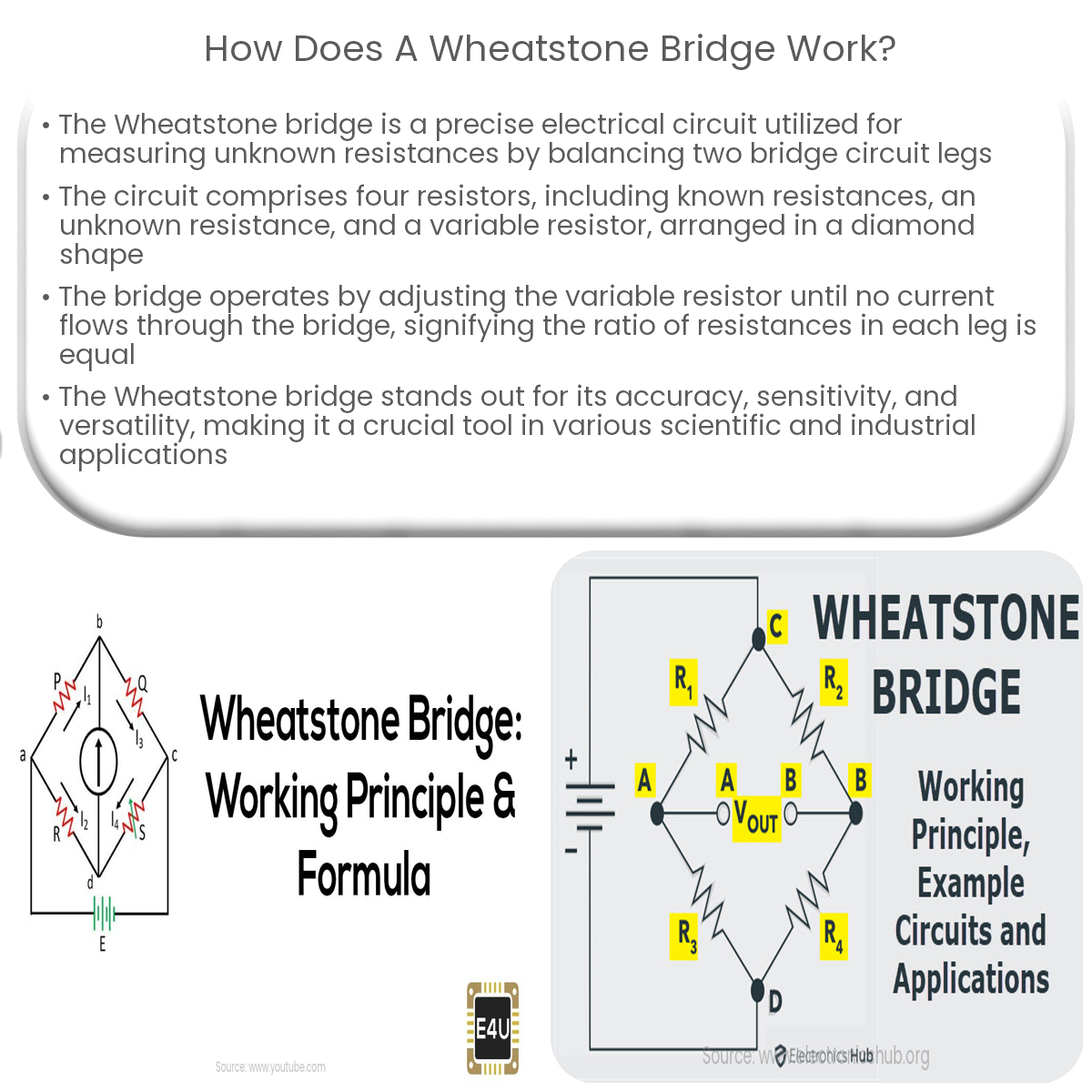A Wheatstone bridge works by balancing two legs of a bridge circuit, comparing the ratio of resistances, and providing accurate resistance measurements.
Understanding the Wheatstone Bridge
A Wheatstone bridge is a precise electrical circuit that measures unknown resistances by balancing two legs of a bridge circuit. The device operates on the principle of null deflection, meaning that it achieves a balanced state when the ratio of resistances in each leg is equal.
Structure of a Wheatstone Bridge
The Wheatstone bridge circuit consists of four resistors connected in a diamond shape. The resistors are arranged as follows:
- R1 and R2: known, fixed resistances
- Rx: unknown resistance to be measured
- R3: variable resistor (typically a rheostat or potentiometer)
A voltage source is connected across the top and bottom of the diamond, while a galvanometer is connected between the left and right sides. The galvanometer measures current flow between the two bridge legs.
Operation of a Wheatstone Bridge
The Wheatstone bridge operates by adjusting the variable resistor (R3) until the bridge reaches a balanced state. At this point, no current flows through the galvanometer, indicating that the ratio of resistances in each leg is equal:
(R1 / Rx) = (R2 / R3)
When the bridge is balanced, the unknown resistance Rx can be calculated using the known resistances:
Rx = R1 * (R3 / R2)
Advantages of a Wheatstone Bridge
The Wheatstone bridge offers several advantages in resistance measurement:
- Accuracy: The bridge circuit can provide highly accurate resistance measurements due to its null deflection principle, which minimizes errors.
- Sensitivity: Wheatstone bridges are highly sensitive, allowing for the detection of minute changes in resistance values.
- Versatility: The bridge can be used with various types of resistive sensors, such as strain gauges or thermistors, to measure physical quantities.
Conclusion
In summary, a Wheatstone bridge works by comparing the ratio of resistances in two legs of a bridge circuit. The device offers high accuracy and sensitivity, making it an essential tool for measuring unknown resistances in a wide range of scientific and industrial applications.





